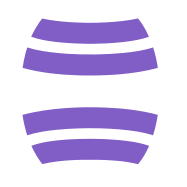Welcome to the next evolution of the internet – Web3. As we bid farewell to the traditional, centralized model of the World Wide Web, Web3 emerges as a decentralized, user-centric paradigm that promises to redefine the way we interact with the digital world.
What is Web3?
Web3 represents a paradigm shift from the current internet infrastructure. Unlike its predecessors, Web3 is built on decentralized technologies, including blockchain and other distributed ledger technologies. This decentralized nature empowers users by giving them greater control over their data, digital assets, and online interactions.
Key Features of Web3:
- Decentralization: Web3 is not controlled by a single entity or authority. It relies on decentralized networks, making it resistant to censorship and enhancing security.
- Blockchain Technology: At the core of Web3 is blockchain, a tamper-resistant and transparent ledger. This technology ensures trust and immutability in transactions, making it ideal for various applications beyond cryptocurrencies.
- Tokenization: Web3 introduces the concept of tokenization, where assets can be represented as digital tokens on a blockchain. This allows for more efficient and seamless transactions of various digital and physical assets.
- Smart Contracts: Self-executing smart contracts automate and enforce the terms of agreements without the need for intermediaries. This enhances transparency and efficiency in various online processes.
- Interoperability: Web3 aims to create an interoperable ecosystem where different blockchain networks and platforms can seamlessly communicate and share data, fostering collaboration and innovation.
The Promise of Web3:
- User Empowerment: Web3 puts users in control of their digital identity and assets, reducing reliance on centralized platforms that harvest and monetize user data.
- Privacy: With improved encryption and user-centric design, Web3 prioritizes privacy, allowing individuals to navigate the digital landscape with confidence.
- Innovation: The decentralized nature of Web3 fosters innovation by providing a level playing field for developers and entrepreneurs to create without the barriers imposed by centralized authorities.
- Financial Inclusion: Web3 has the potential to bring financial services to the unbanked and underserved populations, providing a more inclusive global economy.
Join the Web3 Movement:
As we stand on the cusp of a new era, we invite you to join the Web3 movement. Explore the possibilities, embrace decentralization, and be part of a digital revolution that prioritizes user empowerment, privacy, and innovation. The future of the web is here, and it’s decentralized – welcome to Web3!
